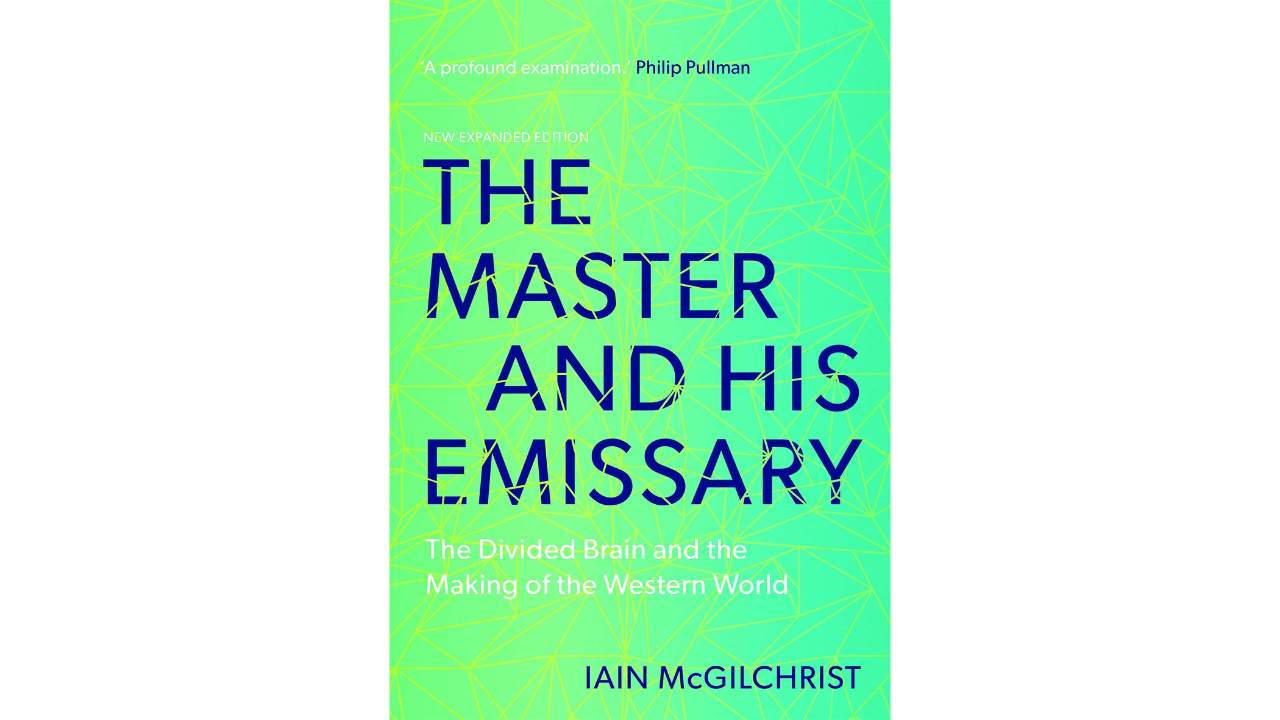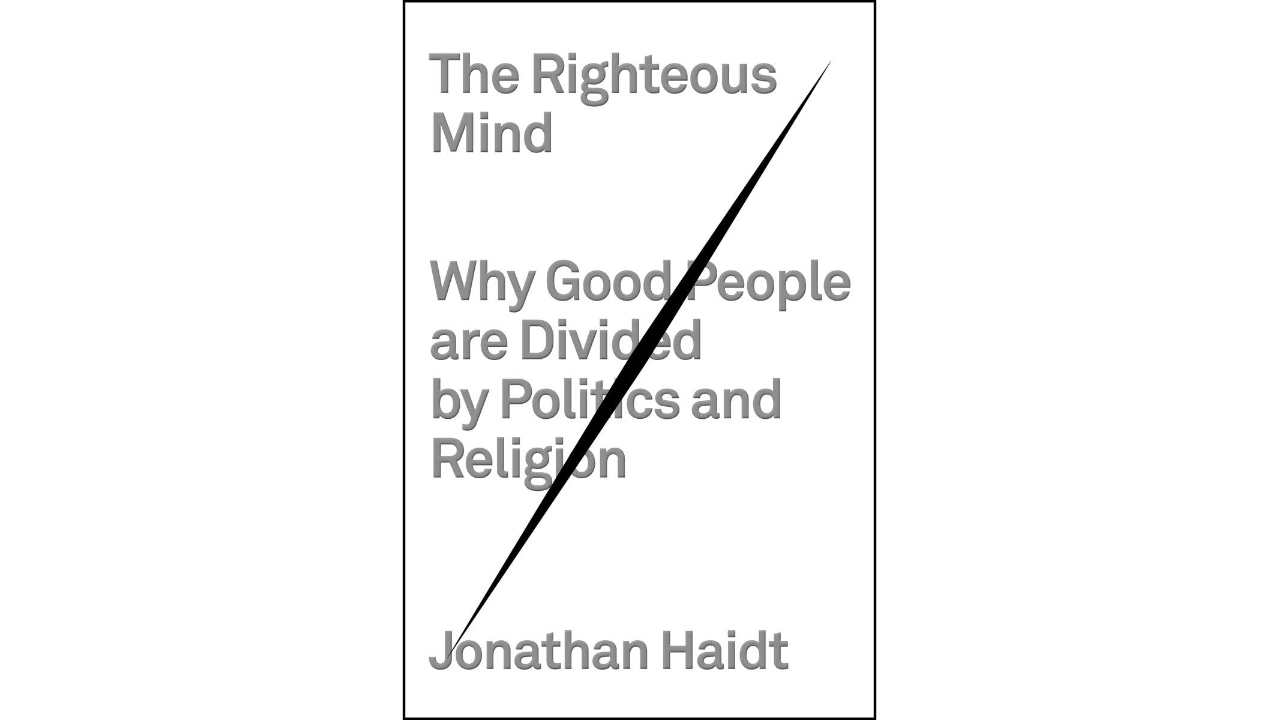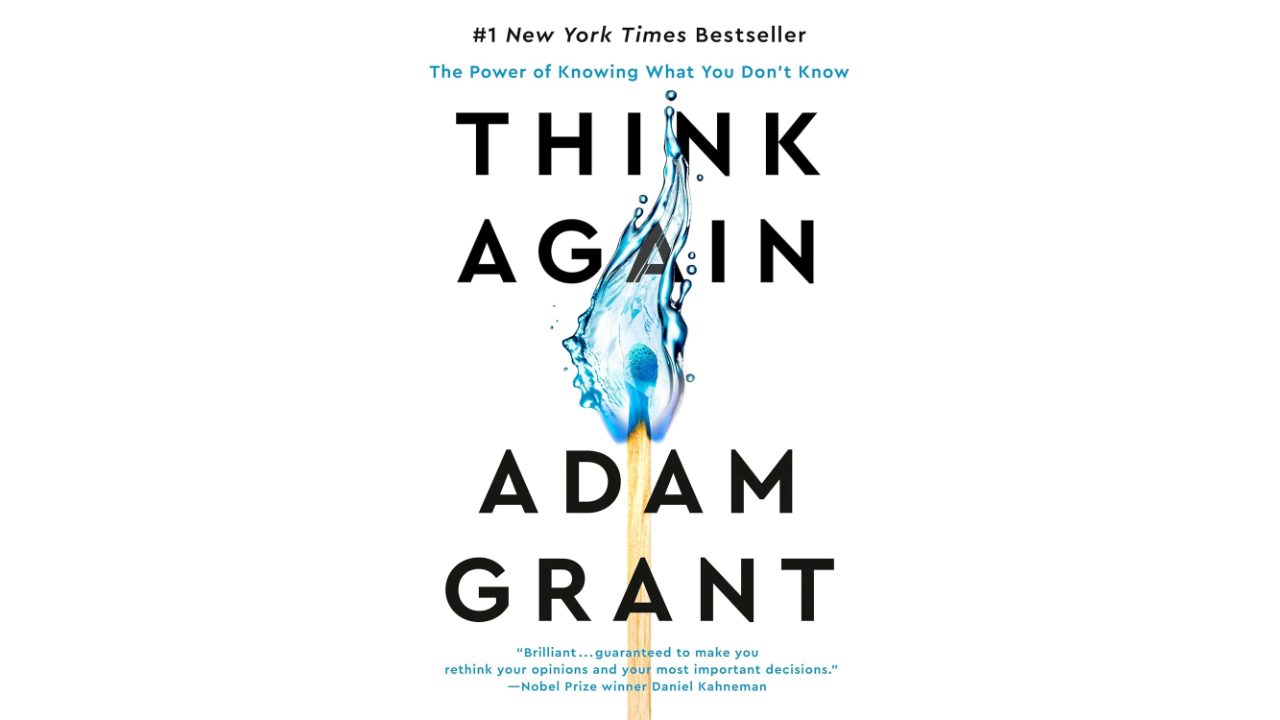Discover six smarter books that challenge your mind, from Pinker to Jung, designed to sharpen reasoning, understanding, and insight. In an era of bite-sized content and endless scrolling, these smarter books remind us that true mental muscle comes from deep dives, not skim-throughs. Whether you’re decoding human nature, rethinking your biases, or exploring the interplay of our cerebral hemispheres, each title here promises a rewarding intellectual workout, no gym membership required.
Rationality | The Laws of Human Nature | Man and His Symbols | Think Again | The Righteous Mind | The Master and His Emissary |
|---|---|---|---|---|---|
 |  |  |  |  |  |
This guide dismantles common cognitive biases and provides practical principles of logic and probability to help you make sense of today’s information overload. | Unveiling psychological laws through vivid historical narratives, this book teaches you how to read, influence, and master the people around you. | Offering an insider’s look at the world of dreams and archetypes, this work shows how symbolic imagery can unlock personal growth and deeper self-understanding. | Championing “confident humility,” it demonstrates through compelling stories and research how questioning your assumptions leads to better ideas and decisions. | Exploring six core moral foundations, this analysis reveals how our gut intuitions shape judgments and offers strategies to bridge deep-seated divides. | Arguing that an overreliance on left-brain abstraction has distorted modern culture, it calls for a restoration of the right brain’s contextual and holistic insight. |
Rationality by Steven Pinker
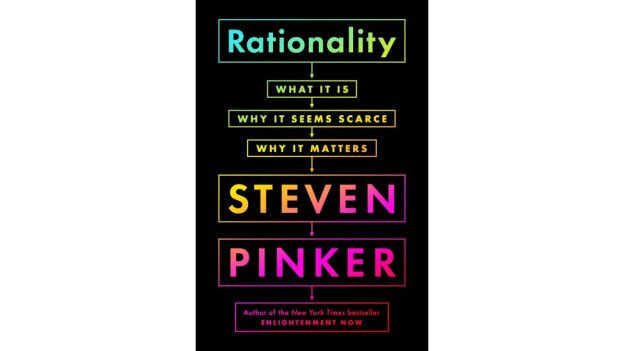
Image credit: Penguin Press
Steven Pinker opens with a clear-eyed examination of the common cognitive traps we fall into, confirmation bias, the availability heuristic, and the seductive pull of anecdotal evidence. He illustrates each with vivid, often humorous examples: investors swayed by last quarter’s hot stock, or armchair pundits ignoring inconvenient data. From there, he lays out the pillars of rational thought, probability theory, Bayes’s rule, and formal logic, showing how these centuries-old tools remain indispensable in cutting through today’s noise.
Beyond theory, Pinker excels at practical application. He walks the reader through interpreting statistics in the media, deciphering scientific studies, and weighing expert opinions. By dissecting headlines about health scares or political polls, he teaches readers to ask the right questions: Who paid for this study? What’s the margin of error? How might framing bias distort the conclusion?
In his final chapters, Pinker ties rationality to moral and civic life, arguing that clear thinking fosters empathy and cooperation. He warns against intellectual tribalism, where groups defend beliefs at all costs, and points toward constructive discourse grounded in shared evidence. His parting message is both urgent and optimistic: in an age of misinformation, cultivating rational habits is our best defense against chaos.
The Laws of Human Nature by Robert Greene
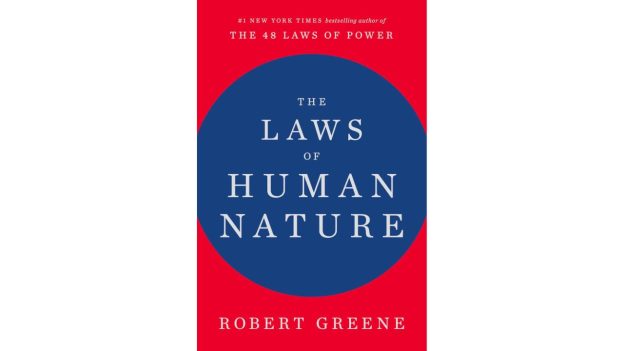
Image credit: Viking
Robert Greene embarks on a journey through the dark and light of human behavior, structuring his analysis around immutable “laws” that govern our actions. Each law, from Irrationality to Generational Myopia, is unpacked through meticulous historical case studies, such as Catherine de’ Medici’s ruthless psychological tactics or Martin Luther’s magnetic authenticity. Greene’s prose is unflinchingly direct: he confronts the reader with uncomfortable truths about envy, narcissism, and our tendency to project inner dramas onto others.
While exploring the mechanics of power and influence, Greene weaves in the latest psychological research on mirror neurons, emotional contagion, and the social brain. He shows how skilled leaders exploit these dynamics, whether to foster unity or manipulate crowds, and offers countermeasures for the unwary. Anecdotes of corporate boardrooms and medieval courts intermingle seamlessly, underscoring that the human psyche hasn’t changed much over centuries.
Greene doesn’t leave the reader stranded in cynicism; he provides a pragmatic toolkit for self-mastery. By cultivating self-awareness, mastering empathy, and adopting strategic patience, readers can sidestep manipulation and wield influence responsibly. The result is a masterclass in reading people and steering social currents with both caution and conviction.
Man and His Symbols by Carl Jung

Image credit: Bantam
Carl Jung and his collaborators usher the reader into the hidden realm of the unconscious, where dreams speak a universal language of symbols and archetypes. Beginning with vivid dream vignettes, a labyrinth, a golden snake, Jung decodes their layers, revealing how the psyche uses imagery to convey growth, conflict, and transformation. He argues that paying attention to these nocturnal narratives enriches our waking lives by illuminating dormant potentials and unresolved tensions.
The book then delves into four major archetypes: the Self, the Shadow, the Anima/Animus, and the Persona. Through accessible case studies, ranging from medieval visions to modern psychiatric patients, Jung shows how these figures recur across cultures and epochs. He blends mythological parallels with clinical observations, demonstrating that an encounter with one’s Shadow or integration of the Anima can catalyze genuine psychological maturation.
Rich illustrations and diagrams accompany the text, from mandalas to mythic tableaux, providing visual footholds in Jung’s complex theories. These plates aren’t mere decoration; they function as prompts for personal reflection and guided introspection. Ultimately, Jung makes a compelling case: understanding our inner symbols is indispensable for achieving wholeness and living authentically.
Think Again by Adam Grant

Image credit: Viking
Adam Grant champions intellectual humility, urging readers to treat their beliefs as hypotheses rather than sacred truths. He begins with engaging narratives, a CEO who reverses a billion-dollar decision after a junior employee’s challenge, or a teacher transforming classrooms by inviting peer critique, to illustrate the power of “confident humility.” This mindset, he contends, underpins creative breakthroughs and resilient leadership.
Grant then dissects the psychological barriers to rethinking: the cognitive ease of confirmation, the social discomfort of admitting error, and the identity threat posed by changing one’s mind. He draws on organizational research to show how companies like Bridgewater Associates institutionalize debate through “idea meritocracies,” where dissent is systematically encouraged. These examples serve as blueprints for individuals and teams aiming to foster cultures of curiosity and candor.
In actionable closing chapters, Grant offers routines for habitually updating our views: from “pre-mortems” that anticipate project failures to “devil’s advocate” swaps that rotate the role of challenger within teams. He even provides conversation scripts for broaching sensitive topics with friends and family. By the end, readers come away equipped to navigate a world where complexity demands constant learning and unlearning.
The Righteous Mind by Jonathan Haidt
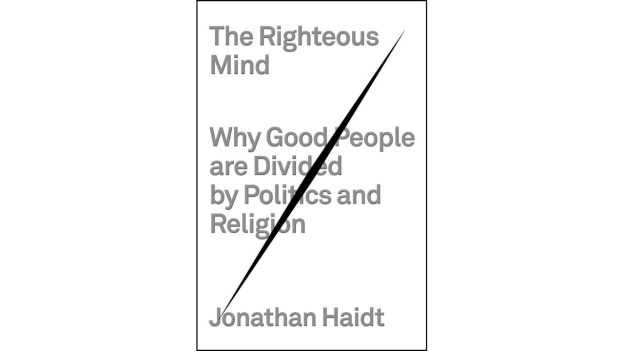
Image credit: Yale University Press
Jonathan Haidt takes readers on a moral safari, exploring the six foundational pillars, Care, Fairness, Liberty, Loyalty, Authority, and Sanctity, that shape ethical reasoning across cultures. Using eye-opening experiments, such as “trolley problems” and purity-based dilemmas, he demonstrates that gut intuitions typically come first, with rationale trailing behind as post-hoc justification. His metaphor of the elephant (intuition) and the rider (reason) brilliantly captures this dynamic.
Haidt enriches theory with cross-cultural fieldwork, from India’s caste rituals to American political town halls, showing how different societies privilege certain moral foundations over others. He argues that liberals tend to emphasize Care and Fairness, whereas conservatives tap more broadly across all six pillars. This symmetry explains why well-intentioned advocates on each side often talk past one another, convinced the other is morally bankrupt.
In a spirit of bridge-building, Haidt prescribes strategies for moral humility: acknowledging our “moral matrices,” seeking out respectful dialogues, and affirming shared values before debating contentious issues. He highlights initiatives like moral reframing, tailoring arguments to an audience’s moral language, as a path toward political civility. Ultimately, he presents a hopeful vision: understanding our moral minds can help heal the fractures tearing at social cohesion.
The Master and His Emissary by Iain McGilchrist
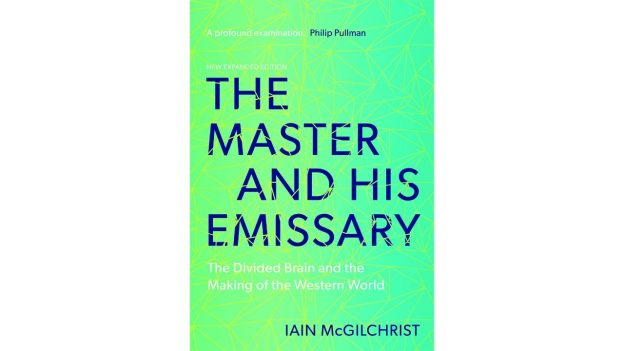
Image credit: Yale University Press
Iain McGilchrist embarks on a sweeping investigation into how the brain’s two hemispheres shape our perception and culture. He portrays the right hemisphere, the Master, as the organ of context, metaphor, and holistic awareness, while the left, the Emissary, excels at linear reasoning, categorization, and literal representation. Drawing on neuroscience experiments, from split-brain studies to neuroimaging, McGilchrist argues that these modes of attention have profound implications for how we engage with the world.
He then traces Western civilization’s shifting balance toward the left hemisphere’s mode of thought, charting developments in art, science, and philosophy that favor abstract control over embodied richness. From the mechanistic cosmology of the Enlightenment to the reductionism of modern academia, McGilchrist suggests that our overreliance on left-brain paradigms has led to a loss of meaning, ecological imbalances, and social fragmentation. His critique is rigorous but never dismissive of the Emissary’s achievements.
In his final analysis, McGilchrist calls for a “re-mastering” of our collective psyche: re-valuing the right hemisphere’s capacity for nuance, relationship, and the sacred. He points to emerging fields, ecopsychology, embodied cognition, and integrative medicine, as hopeful signposts. Though demanding in scope and detail, the book ultimately offers a vision of healing: a cultural rebalancing that honors both hemispheres’ gifts.
In a world awash with soundbites, these smarter books offer depth, rigor, and a hefty dose of intellectual challenge. Dive in, and you may find your thinking forever changed. Ready to get smarter? Pick one up today and start turning pages into brainpower.



